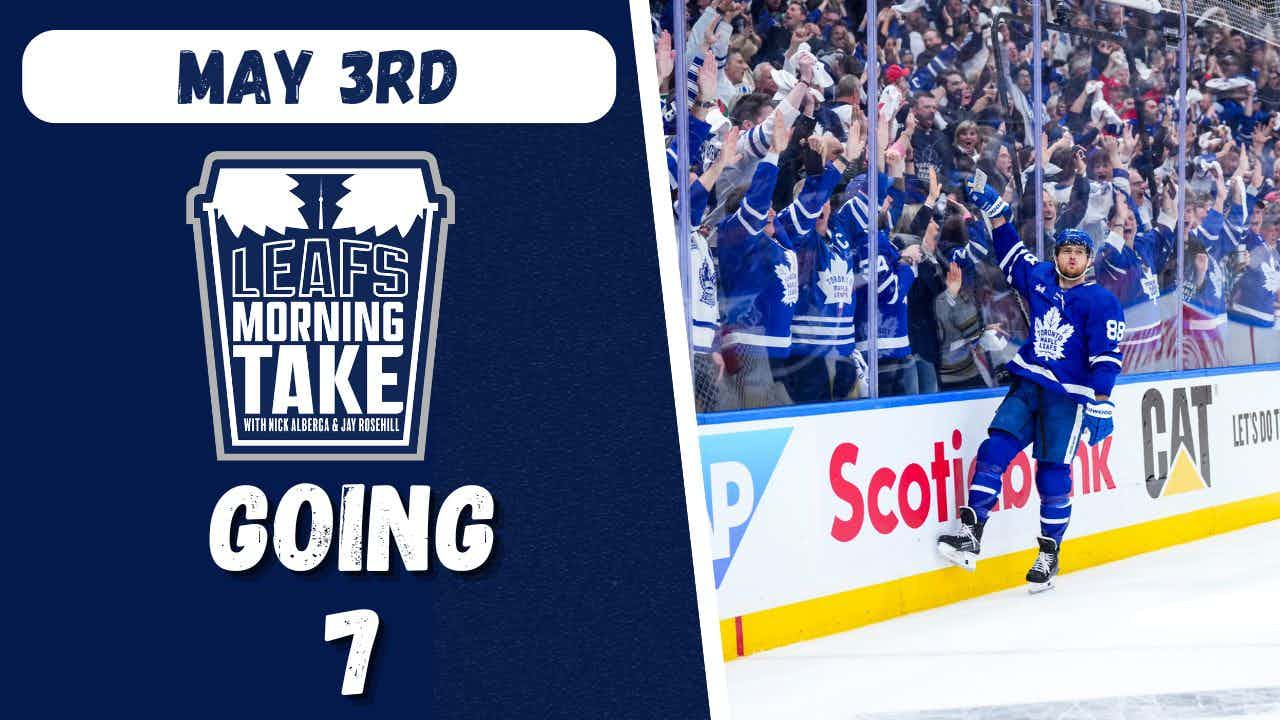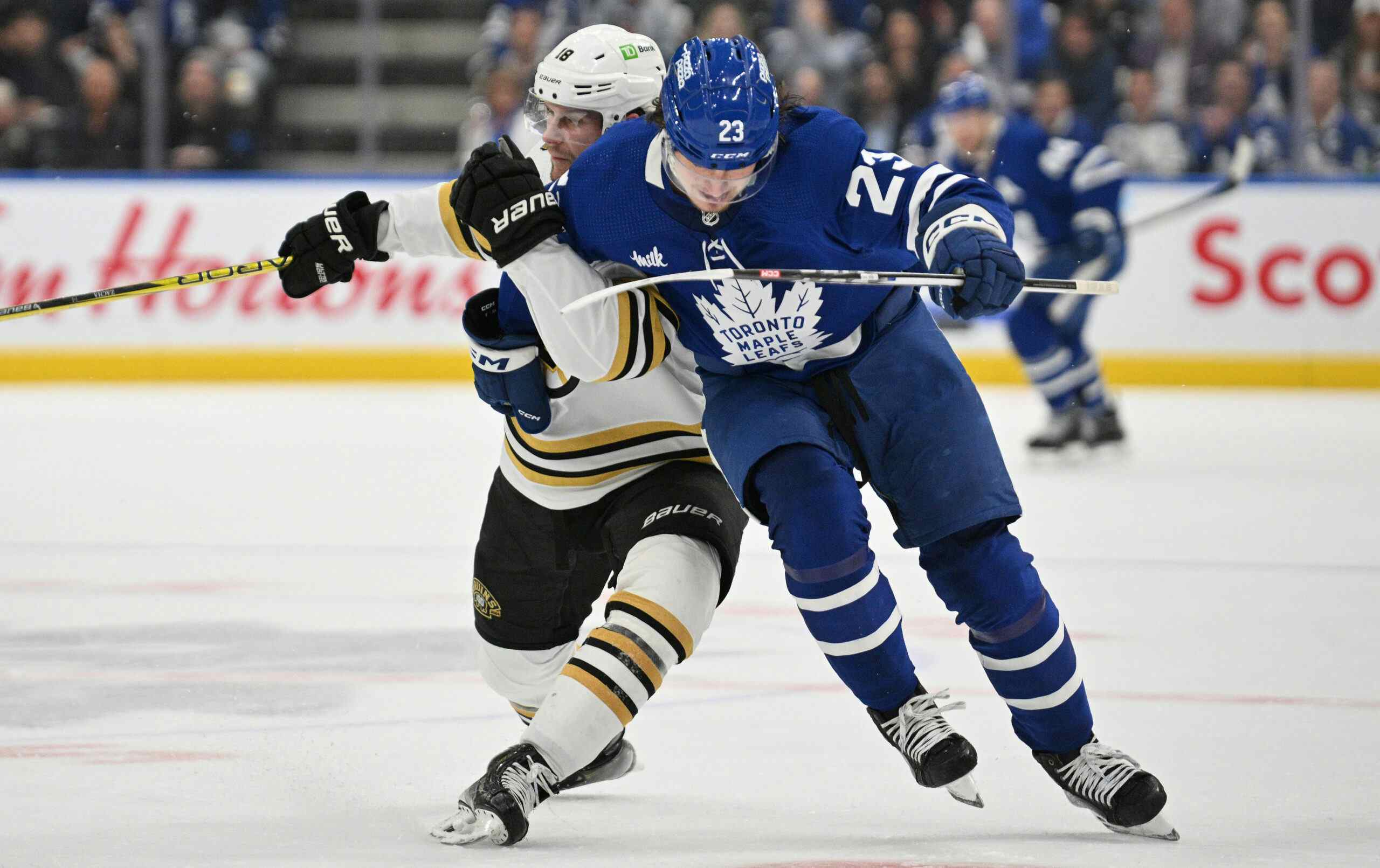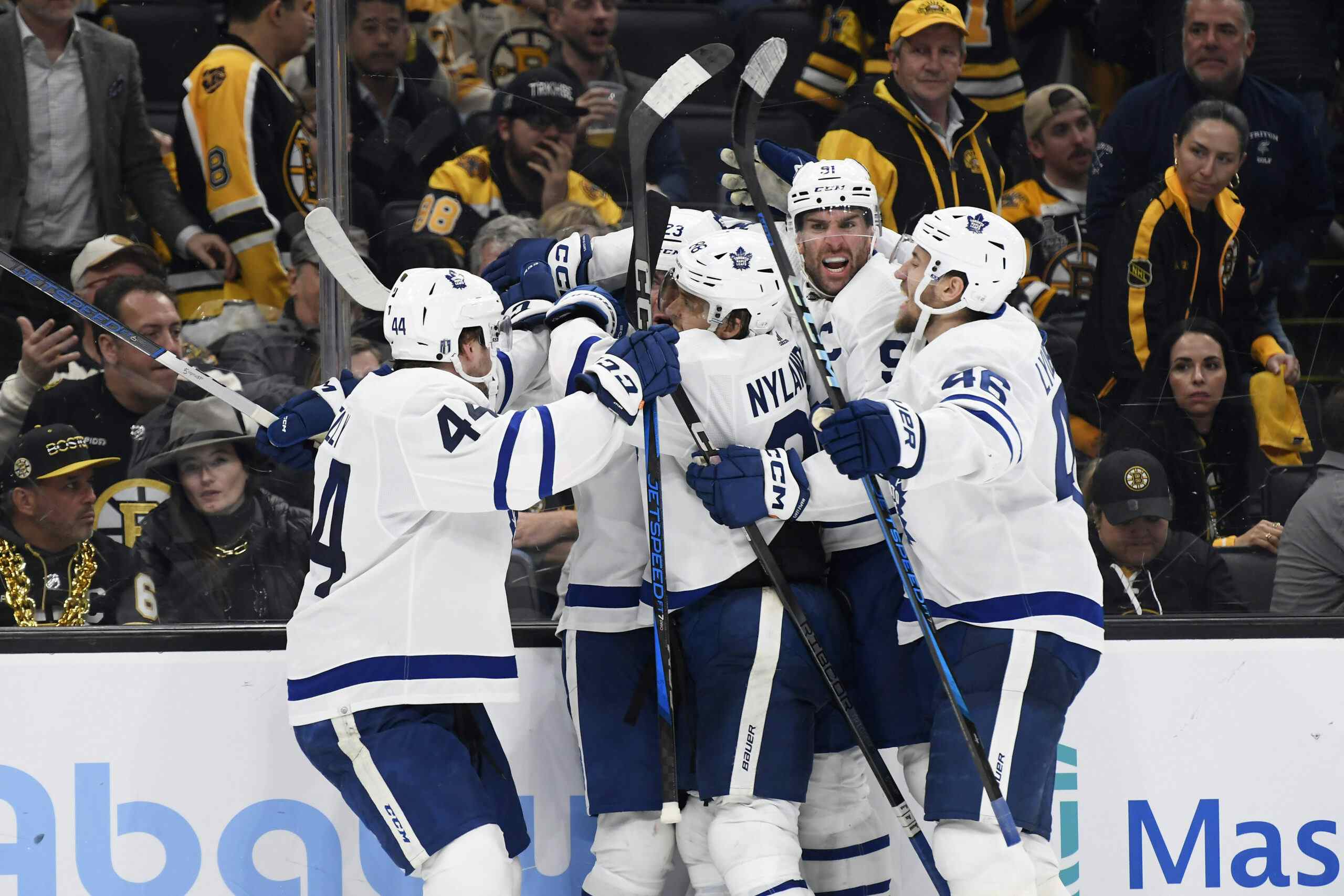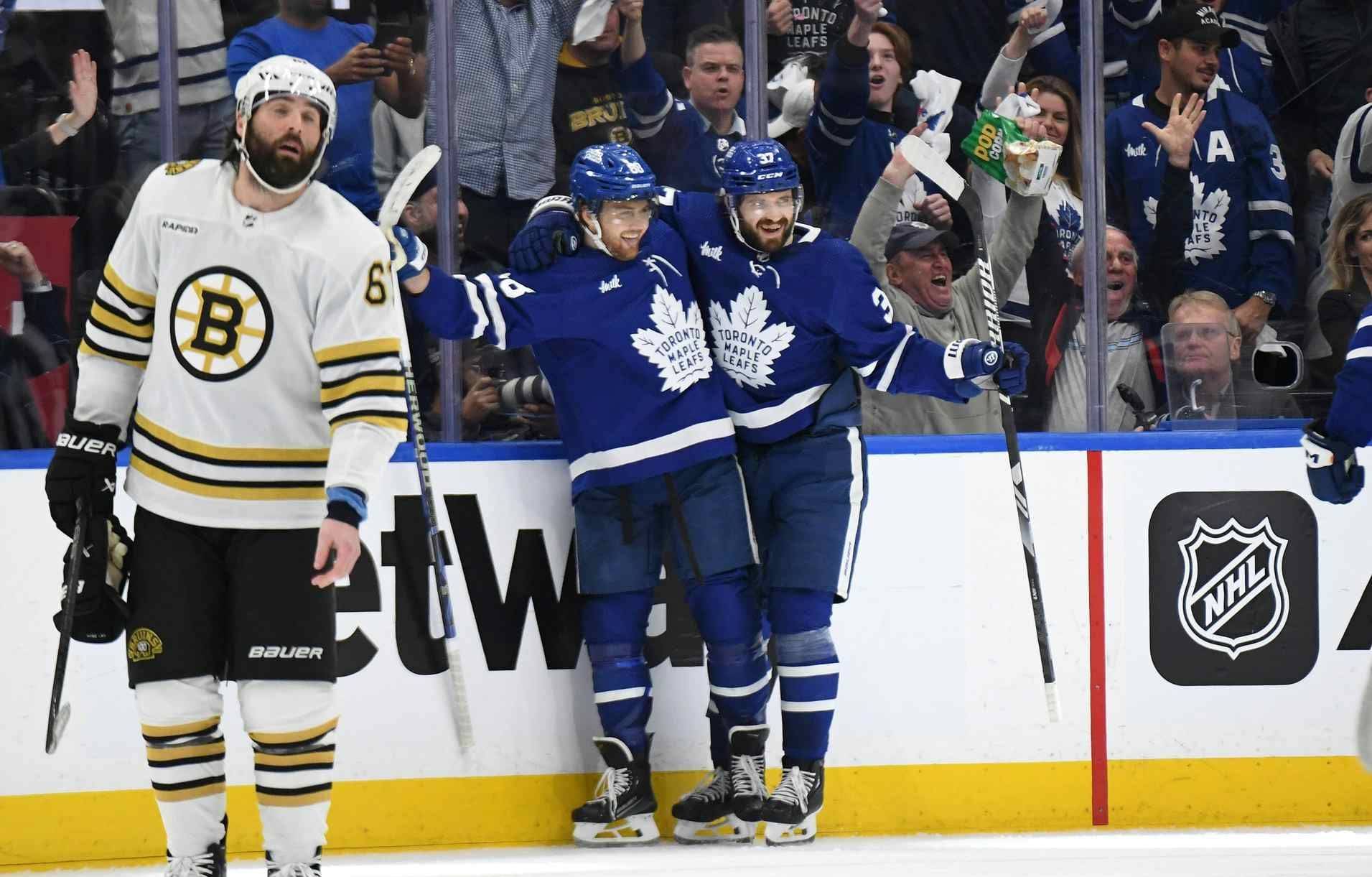Grading Every Leafs Move on a Busy July 1st
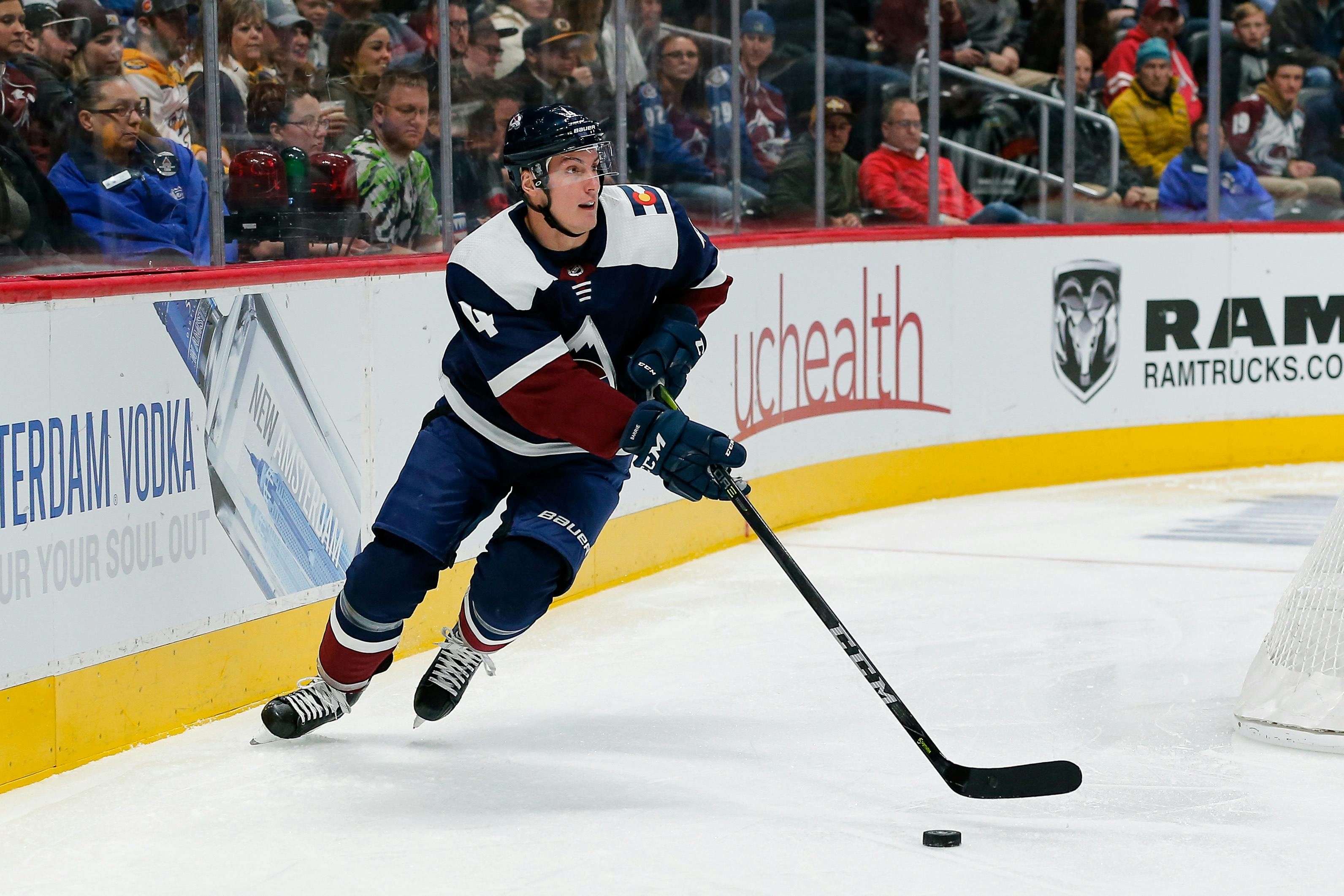
The Leafs certainly didn’t keep quiet yesterday.
Between clearing the equivalent of a small nation’s GDP off of their cap, diving headfirst into the bargain bin, and trading one of the franchise’s longest-standing and deeply-rooted players in recent memory, Kyle Dubas came out swinging for the Canada Day festivities, leaving a trail of carnage in his path.
As a result, the Toronto Maple Leafs are a better hockey team right now than they were 48 hours ago. At least, when viewing their moves on the whole. How did each individual transaction play out, however?
Well, I’m glad you asked.
Trade: Nikita Zaitsev + Connor Brown + Michael Carcone to Ottawa for Cody Ceci + Ben Harpur + Aaron Luchuk + 2020 3rd Round Pick
Grade: B++
It’s hard not to watch the Leafs jettison both of Nikita Zaitsev and Connor Brown at once, clearing a combined $6.6 million off their ever-tightening cap – and stripping Mike Babcock of two over-used toys, as well – and give them an A for their troubles.
On the surface, at least, it seems like they’ve earned it.
This trade was a future-altering move for a franchise very much in need of one. The decision yesterday to move out a pair of relics from regimes past effectively paved the way for Kyle Dubas to completely alter the shape of the Leafs heading into what should be a contention season, re-structuring their roster nearly down its bedrock and ultimately exiting the first day of free agency with a more balanced unit that plays a more modern game.
That being said, this deal didn’t happen for free. Don’t get me wrong, the Maple Leafs undoubtedly left the table as the winner here, without question. Losing a trade to the Ottawa Senators is cause for relegation in today’s NHL. It simply cannot be done. But taking on Cody Ceci for what will reportedly be an identical AAV to Zaitsev’s as cap penance – albeit for only one year, opposed to the latter’s remaining five – definitely hurts and seems to go against much of what this management group values in the players they bring in.
Ceci is, uh, not good.
As we see so often in this wacky sport, the 25-year-old rearguard is precisely the type of player whose positive perception within hockey circles (until recently, at least) is driven by his physical tools and prior draft pedigree rather than actual on-ice contribution.
Case in point; Ceci was once rumoured to be the centrepiece of a one-for-one deal with Edmonton for Taylor Hall back in 2016 despite coming off a 26-point season in which he drove possession to the tune of a 44.6% CF/60 at 5v5.
Still, there is something to be said for the benefit of a fresh start.
Ceci was never the top-pairing stud Ottawa thought him to be. Frankly, the organization misjudged his talent from the onset, heaping undue responsibility on a young defenceman far too early than he could ever conceivably handle. Ceci was a square peg on the Senators’ roster. And no matter how many times Dave Cameron, Guy Boucher, and finally Marc Crawford (wow, Ottawa will have had four different head coaches since 2016?) tried to mash him into that round hole, Ceci was never going to fit.
The Leafs won’t force him to. Assuming Babcock actually plays ball with his new asset (which is a HUGE uncertainty) and sees him as something other than a new Zaitsev, Ceci likely won’t get the minuscule 44.7% offensive zone start rate he saw as a Senator last season, or the 41.2% he did in the season before that. Ceci’s expected workload as a Leaf seems like a good bet as well to fit his capabilities better, expected to fall well south of the steady 23-minutes-per-game diet he was being fed in Ottawa.
Basically, the entire process behind his usage will be different. Markedly, so. It has to be. And when playing a third-pairing role in sheltered minutes with a heap of offensive zone starts to boot, Ceci could very well turn into a nice little stop-gap for the Leafs on the right side.
Signing: Kenny Agostino – 2 Years/ $1.4 Million ($700,000 AAV)
Grade: A-
Ah, the depth guys. Buckle up, folks. We’re about to wade into the nitty-gritty.
Kenny Agostino is an interesting addition for this Leafs team in their current position. At 27-years-old, the veteran winger is certainly not a prospect, and with just 85 games played across five NHL seasons, Agostino has more or less proven to be an adequate tweener for the bulk of his career. Nevertheless, Agostino has driven play quite well in the brief cameos he’s spent at hockey’s highest level, finishing his most recent stint with the New Jersey Devils to close out 2018-19 with a 51.1% CF/60 at 5v5 in relatively even usage, per HockeyReference.
In fact, our very own Jacob Stoller actually wrote a piece this morning which elaborated upon the potential value Agostino could bring to the entire Leafs organization as a whole, getting into greater detail than I will here.
In all likelihood, Agostino will max out as terrific forward depth for the Marlies. They certainly need it, after all, what with Michael Carcone heading to Ottawa yesterday afternoon in the Zaitsev deal and veteran centre Chris Mueller eventually signing in Tampa soon after.
Agostino is as close to an elite scorer as you’ll find at the AHL level. The 2010 4th-rounder has racked up production at the break-neck pace of 0.90 points-per-game across his nearly 300-game tenure in the American League, a span which also includes a career-best 83 points in just 65 games back in 2016-17. If Agostino can simply continue along that course down on the Marlies – gifting Jeremy Bracco with another high-scoring veteran linemate and power play partner – his signing will have been more than worth it.
In fact, Agostino’s two-year, $1.4 million contract is practically identical to the two-year, $1.3 million deal Mueller signed with the Leafs back in 2017. And if the former’s purpose boils down to simply replacing the latter, Agostino seemed like the market’s best available option.
Signing: Nick Shore – One Year, $750,000
Grade: A
Somewhere out in the barren wasteland known as Mississauga, Ian Tulloch is smiling.
Nick Shore is essentially hockey Twitter’s Cody Franson in forward form; analytical darling with some terrific underlying numbers who, if only someone would just use him correctly, could be a cost-effective option at centre. The only hiccup in this analogy is that Shore eventually got signed.
Look, they’re not wrong. Shore’s metrics are, indeed, terrific. The 26-year-old has never put forth an even-strength CF/60 lower than 52.1% at any point in his four NHL seasons, topping out at an absurd 61.4% in 68 games with the Los Angeles Kings back in 2015-16.
Frankly, I didn’t even think you were allowed to top 60%. And yet, here we are.
Finding no suitors last offseason, Shore signed with the KHL’s Metallurg Magnitogorsk to experience what was an admittedly rough season of just 16 points in 37 games. But perhaps Shore’s overseas struggles were merely the lasting effects of one significant life transition too many. Keep in mind, Shore split the 2017-18 campaign between three different teams prior to his one-year trip to Russia. And even while integrating himself into two different organizations who operated upon two different systems, Shore still managed to produce a decent 19 points in 64 games in just over 14 minutes ice per night – all the more impressive when considering Shore saw an offensive zone start rate of just 41.1%.
Those numbers scream of hidden value. In fact, nearly every single one of Shore’s most common linemates from that 2017-18 season; a) put up a CF/60 at 5v5 well above the 50% barrier in usage alongside Shore and; b) saw that number decline whenever they happened to be separated.
Even going off of his numbers alone, Shore simply makes those around him better. And when you consider that he’ll be slotting into a Leafs bottom-six to replace one of two depth wingers – Connor Brown and Patrick Marleau – who effectively did the opposite, that’s a pretty decent bet for only a smidge above league minimum.
Signing: Kevin Gravel – One Year, $700,000
Grade: N/A (C’mon, you really expected me to grade this one?)
Look, man, I don’t know.
I’m only, like, 98% certain “Kevin Gravel” is an actual hockey player and not the FBI-assigned alias of a former mob Don who took a witness protection deal and ratted out the family. You’ve seen The Departed. You know they don’t take too kindly to rats. Jack Nicholson said so. Still, as far as I’m concerned, there’s roughly a 2% chance that Gravel doesn’t exist.
The 27-year-old blueliner is a left-shot (because the Leafs don’t have enough of those already) who spent 36 games with the moribund Edmonton Oilers last season while putting up three points (all assists) in a little under 15 minutes per night.
That’s all I got, folks. Sorry. I’ll let this tweet from Adam sum up the rest.
Signing: Jason Spezza – One Year, $700,000
Grade: B+
Now we’re talkin’!
Spezza may be old (he’s 36) and coming off a down year in which he scored the third-fewest points (27) and averaged the second-lowest ice time (13:16 per game) of his career, but Spezza’s underlying numbers still paint the picture of a cost-effective depth centre in waiting, albeit if used correctly.
Though, with Mike Babcock, that last one is always a big “if”.
Then again, it might not be. Spezza appears to be the perfect bridge in preference between Babcock and Dubas, checking boxes on either’s list of ideal attributes.
For one, Spezza is a right-shooting veteran centre who measures in every day at 6’3 and whose 58.2% success rate on faceoffs last season led the entire NHL among players with at least 330 attempts; perfect for Babcock.
On the other hand, Spezza is also a positive possession player at even strength despite spending the bulk of his 2018-19 minutes next to the likes of Devin Shore and Mattias Janmark, made every regular linemate of his better when it came to driving play, and stands to regress back to the mean nicely following consecutive years of dismal PDO; perfect for Dubas.
Was Spezza signed to be Toronto’s new third line centre, as some have tentatively pencilled him in their mock depth charts? Absolutely not. Not even if there’s a fire.
In a specialized role, however, Spezza could thrive – perhaps centring the fourth line between any of Trevor Moore, Nicholas Petan, Nick Shore, or Kenny Agostino as his cast of wingers while playing facilitator on the Leafs’ second power-play unit, as well. The Leafs have the luxury of options – the kind which can allow for Spezza to become the meaningful upgrade this lineup sorely longed for when Babcock was sending Frederik Gauthier out in the waning minutes of game seven.
And at league minimum? Even better.
Trade: Nazem Kadri + Calle Rosen + 2020 3rd-Round Pick to Colorado for Tyson Barrie + Alexander Kerfoot + 2020 6th-Round Pick
Grade: A (But a sad one, though)
Boy, this one hit hard. Really hard.
Listen, the specifics of the trade will be hashed out in a moment. I promise, they will. But for now, I’m going deep into my feelings.
The Leafs drafted Nazem Kadri seventh overall nearly a decade ago, all the way back in 2009. I was in middle school. Grade eight, to be exact. Truly the most awkward of adolescent phases.
At a time of failure, hopelessness, Vesa Toskala, and “pugnacity”, Kadri stood as a symbol – one of hope to an entire generation of fans, and, to a group of Leafs faithful who had never before witnessed a hockey player who looked like them, a whole lot more.
It wasn’t always easy with Kadri. In fact, it rarely was. There were the growing pains early in his career, the under-the-radar stories you chose to ignore, and the constant cutting remarks in the press from the crotchety grandpa your family leaves off their annual Christmas card mailing list, Ron Wilson.
Some hiccups were justified. Others were not. But even at the bitter end, Kadri’s tenure in Toronto happened to be underscored by these very issues. His final game in a Leafs uniform – which really should have been a momentous occasion in different circumstances – saw him fail to make it to the final buzzer, with Kadri laying a vicious crosscheck to the head of Jake deBrusk which left him suspended for the remainder of Toronto’s first-round playoff series versus the Bruins.
Again. It happened again.
Still, Kadri allowed for a chunk of the Leafs’ fanbase to live vicariously through him. He had flaws; just like us. He cared deeply about the Toronto Maple Leafs; just like us. And, perhaps most miraculously of all, he managed to endure through one of the worst eras in the franchise’s century-spanning history and make it out for the better on the other side; again, just like us.
Nazem Kadri will be missed. More than many ever thought he would.
Alright, back to the trade. Truly, this was the grand slam of Dubas’ multi-dinger Canada Day.
Weaponizing the cap space afforded to him earlier in the day by the Zaitsev trade, Dubas swung for the fences and, in a watershed moment, finally addressed the Leafs’ most glaring weakness by acquiring Tyson Barrie, the long-sought-after RHD the franchise has lacked since the days of Tomas Kaberle. To do it, all Toronto’s bespectacled GM had to forfeit was a luxury item in Kadri, a 25-year-old depth defender in Calle Rosen, and one of his two 3rd-round picks while, in the process, somehow convincing Colorado to retain 50% (!!!!!) of Barrie’s salary.
And I haven’t even mentioned Alexander (he hates being called Alex) Kerfoot yet. As the icing on this trade cake, Kerfoot, who is a centre, is four years younger than Kadri, scored a mere two fewer points than him last season, bears better defensive metrics, and will likely count for around $1.5 million less against the cap.
That is a win. Full stop. Not to mention, Barrie will likely find a spot on the Leafs’ top pairing next to Morgan Rielly to kick off the year, instantly becoming the best defence partner Rielly has ever played with during his time in Toronto while forming one of the NHL’s most offensively formidable blueline duos, as well.
Last season, Rielly and Barrie scored a combined total of 34 goals and 131 points, each player finishing well above the 50% barrier respectively when it came to CF/60 at 5v5 (Rielly at 51.7%, Barrie at 53%) despite facing the opponent’s top competition. And while Barrie isn’t exactly a defensive stud, his arrival signals a clear message that the Toronto Maple Leafs are a Kyle Dubas team that will play a Kyle Dubas style of hockey.
Which, when comparing it to the progression-stunting features of Babcock’s style, is a breath of fresh air.
The Leafs were always going to be forced to dip into their positional surplus to address their roster weaknesses. The solution to their problems was never going to just fall from the sky, after all. But in successfully acquiring that missing piece at half the cost and without giving up a star player to do it, Dubas manoeuvred through those choppy waters better than almost anyone could have hoped.
And something tells me he’s not quite done, either.
Recent articles from Mike Stephens

